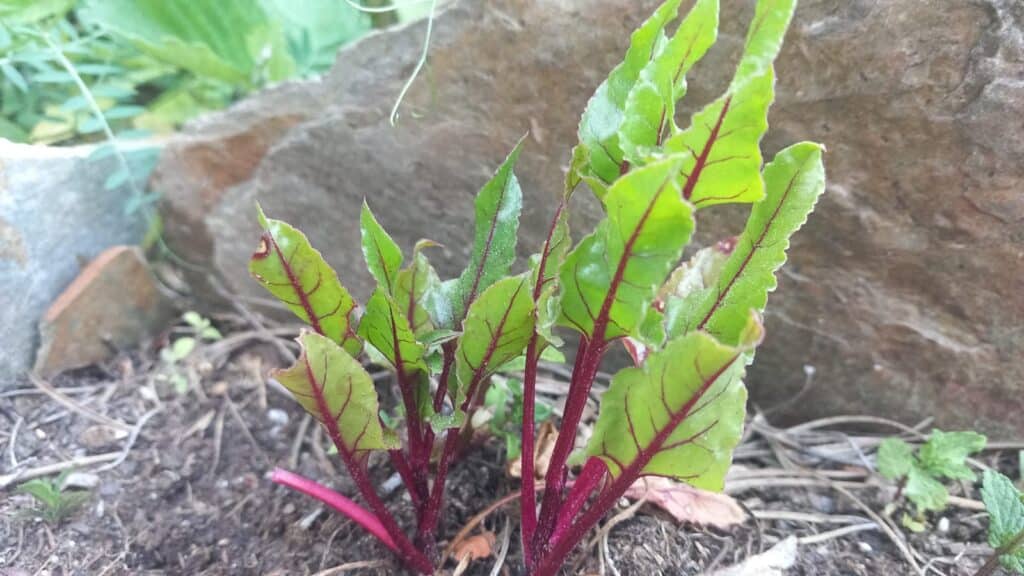Red chard is a spectacular variety of chard (Beta vulgaris var. cicla ) that stands out for its deep red stems and dark green leaves with reddish veins. This plant not only stands out for its beauty, but also because it is rich in antioxidants, fiber and minerals, and it is also very tasty! We like it much better than the traditional green chard.
In addition, it is ideal for both vegetable gardens and large pots on balconies or terraces. Its resprouting capacity, cold tolerance and low maintenance make it a perfect ally for those who want to harvest their own leaves for a good part of the year.
We tell you how to grow it step by step so you can transform your space into a green corner full of flavor… Read on and get ready to get your hands dirty! 😉

Regular and constant watering. The substrate should not be allowed to dry out completely.

Sun exposure in winter, semi-shade in summer.

Exudate / Dripper / Careful manual irrigation. Avoid excess of stagnant humidity

Very easy to grow, ideal for beginners.

It is resistant to moderate cold. It can be grown almost all year round in temperate climates.

By means of seeds.
Chard Care
Soil Requirements
Red chard is not picky about soil type, making it an affordable choice even for beginning gardeners. However, they do much better in fertile, deep, well-drained soils where their roots can expand easily. A substrate enriched with mature compost and organic matter will favor more vigorous growth and thicker, more colorful stems.
Soil Preparation
You can use universal compost enriched with homemade compost or bokashi, thus improving soil fertility, structure and moisture retention capacity. If you are going to plant them in pots, make sure they are at least 30 cm deep so that the roots can develop well and thus ensure a healthy and productive plant.
Light Requirements
Chard is a very adaptable plant that can grow in full sun or semi-shade, which makes it an excellent choice for different types of gardens, even in urban spaces. However, if you grow it in areas with very hot summers or in intensely sunny climates, it is advisable to provide it with some shade during the central hours of the day. This will help prevent heat stress, keep the substrate moist for longer and prevent the leaves from turning bitter or wilting prematurely.
Irrigation
Watering should be frequent but moderate to keep the substrate moist, especially during the warmer months. They do not tolerate drought well, but neither do they tolerate waterlogging.
Irrigation Methods
It is recommended to use drip irrigation to provide constant and localized water. If you do not have a dripper, manual watering is also effective if done carefully and regularly. The important thing is to maintain a constant humidity without drowning the roots and avoid waterlogging that can attract fungi or pests. Of course, if we plant in a bed, the ideal is exudative irrigation.
Seedling Care
During the first days after germination, keep the seedlings in a warm place with good light, but without intense direct sunlight. Make sure that the substrate does not dry out. When the seedlings have 2 or 3 pairs of leaves, you can transplant them to their final location.
Pest Protection
Although chard is quite hardy, it can be affected by pests such as snails and slugs, especially when the plant is young or in humid environments. It is recommended to monitor regularly and, if necessary, apply remedies that ward off these pests.
Snails and Slugs
Snails and slugs are the most common and persistent pests in chard crops, especially in humid environments or after frequent rains. These mollusks are especially attracted to the tender and fleshy leaves of our plant, which they devour easily during the night. Their presence is usually revealed by the characteristic holes in the leaves and the silvery trails of slime they leave behind.
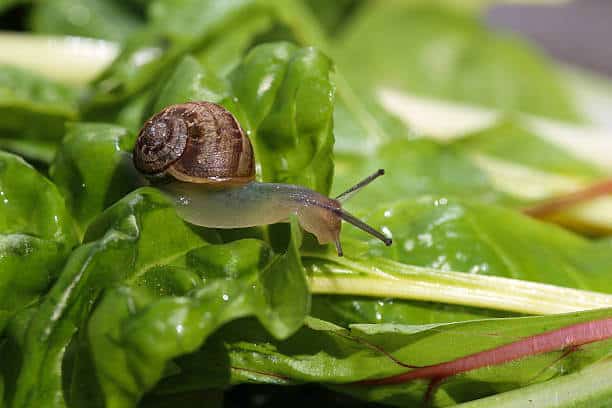
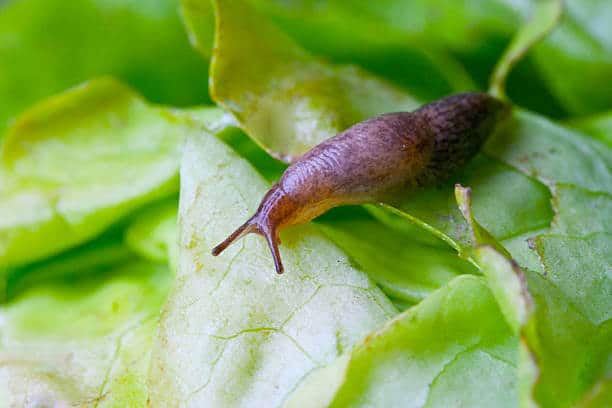
The control of these pests can be done in several ways, combining prevention with manual or natural management. One of the most effective and sustainable methods is to observe the orchard in the early morning or at dusk, when they are usually active, and remove them by hand . However, we can also encourage biodiversity in the orchard by attracting natural predators, such as hedgehogs, some birds or certain insects that help to keep the mollusk population in check.
Another effective and respectful way to keep snails and slugs at bay without affecting their life is to resort to physical strategies that prevent their access to our plants. One of the simplest is to protect young seedlings by wrapping them with a cut plastic bottle, forming a sort of protective ring around the stem. This method creates an effective barrier that prevents the mollusks from reaching the tender leaves during their nocturnal rounds.
We can also reinforce crop protection by acting on the soil, surrounding the base of the chard with materials that make it difficult for these animals to move . Substances such as wood ash, coffee grounds or crushed eggshells have a dry and rough texture that is uncomfortable for them and discourages them from moving forward. These are natural resources that, in addition to being accessible, do not alter the balance of the ecosystem.
These solutions, used in combination, allow us to protect our chard in a sustainable and efficient way, thus ensuring its development without compromising the health of the garden or the organisms living in it.
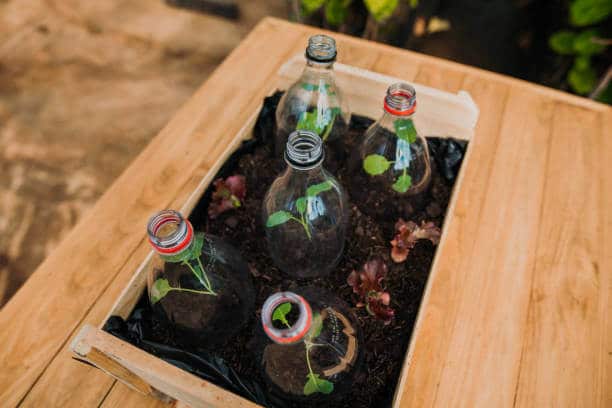
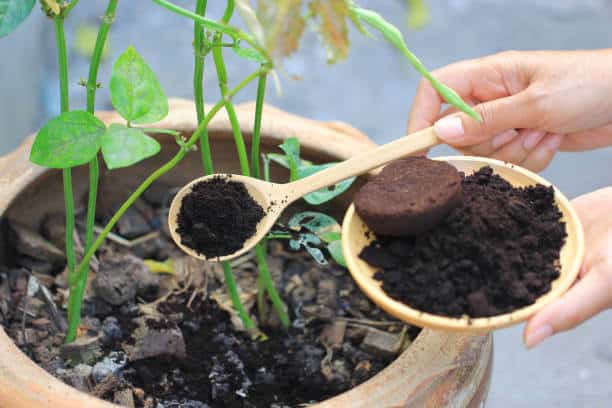
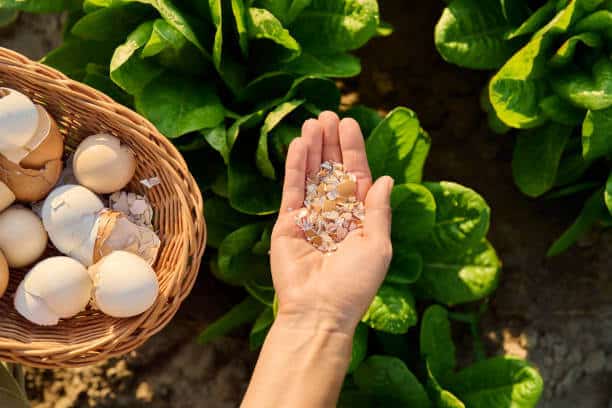
Chard Planting and Harvesting
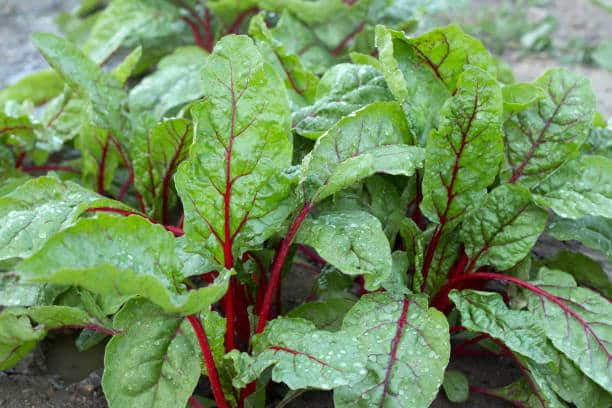
Sowing
Red chard is a hardy and adaptable vegetable, ideal for growing in both vegetable gardens and pots. To start its cultivation, we recommend sowing the seeds in a large seedbed, placing them in rows at a depth equivalent to twice the size of the seed. This technique facilitates effective germination. After sowing, a gentle watering should be carried out to keep the substrate moist, repeating this every time the soil dries out.
Approximately one month later, the seedlings will have developed 2 to 3 pairs of true leaves and will be ready for transplanting. It is important to prepare the soil by enriching it with organic matter, as well as making sure that the soil has good drainage.
Finally, remember that when transplanting, we must maintain a distance of about 20 cm between plants to allow optimal growth.
Collection
After about 40 – 60 days after sowing our chard, it is time to harvest them. This always depends on the growing conditions.
The most recommended technique is leaf-by-leaf harvesting. In this way we select the well-developed outer leaves and leave the center leaves intact to allow for continuous regrowth. This practice prolongs production and keeps the plant healthy.
To avoid damaging the plant, it is advisable to use a sharp knife when harvesting the leaves, making clean cuts near the base of the leaves. But, if in your case you prefer to harvest by hand, here you should hold the stalk and pull gently upwards and outwards in a diagonal movement. It is important not to harvest more than one third of the leaves at one time, thus allowing the plant to recover and continue producing.
With this care, chard can offer continuous harvests for several months, providing fresh and nutritious leaves for consumption.
How to reproduce Red Chard

Although red chard can be easily planted from commercial seed, you can also propagate it yourself from your own plants. To do this, you must allow a chard to complete its life cycle and flower.
To get our own seeds, just leave a healthy and vigorous plant in the ground, from the first season, throughout the winter. In this way, when temperatures begin to rise in spring, the chard will lengthen its central stem and little by little small flowers will appear in clusters, of a discreet greenish tone.
These flowers do not usually attract too much attention, but they have a crucial function: to produce the seeds, which appear in small capsules after the passage of summer. Finally, when it is time to collect them, we will do it when the stems of the plant are dry and the capsules, of which we have spoken, have a light brown color. And once they are completely dry, we will only have to rub them gently, thus separating the seeds from the rest of the plant material.
To save the seeds and use them later, we will only have to keep them in a paper envelope (well labeled to know what variety it is) and keep them in a cool, dark place. In this way they will last us several years.
Uses of Red Chard
Culinary Uses
The leaves and stems of red chard are edible and delicious. Its red stems add color to stir-fries, soups, stews and baked dishes. The tender leaves can also be used in raw salads, providing a juicy texture and a slight bitter touch that combines well with citrus dressings or vinaigrettes.
In addition, this variety contains more betalainspigments with antioxidant and anti-inflammatory properties, which makes it a very healthy choice.
We take them and sauté them directly with olive oil and sliced garlic, without cooking.
Associations
When planning a diverse and healthy garden, it is very useful to consider beneficial associations between plants. Red chard shares the same principles of crop association as other chards.
Thanks to its vertical growth and resistance, it is well adapted to coexist with other species in the same bed. Combining it with plants that repel pests or do not compete for the same nutrients can help us to optimize space, improve the overall health of the garden and promote a more balanced and sustainable production.
| Compatibilities | Incompatibilities |
|---|---|
| Carrot (Both have roots of different depths, so they do not compete for nutrients). | Spinach (Very similar, competing for the same nutrients) |
| Onion and Garlic (its smell helps to repel insects and slugs that can affect chard) | Beet (Both are from the same family, which increases the risk of common diseases) |
| Radish (Grows fast and acts as a trap plant for some pests, protecting chard) | Potato (Both plants are demanding in nutrients and can quickly deplete the soil). |
| Lettuce (adapts well to the same irrigation and partial shading as chard) | |
| Bean, green or low bush (fixes nitrogen in the soil, which enriches the substrate for chard). |
Now that you know a little more about red chard, here are some recommendations that we think you may find useful:
🪴 Pot 30 cm
Perfect for growing in your orchard or garden, with the ideal depth and easy to handle.
👉 View on Amazon
